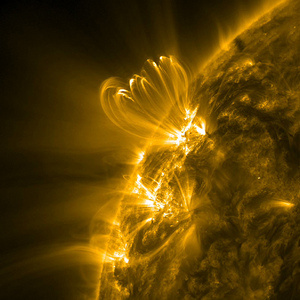24 hours Latest News Update
Solar Flare to hit Earth on Thursday Morning 8th March 2012
 One more solar flare due to sun’s eruption occurred and it is the largest of the last five years. The New York Times reports that the coronal mass ejection will hit earth at about 1:30 a.m on Thursday morning. The solar flare is racing toward Earth, threatening to unleash a torrent of charged particles that could disrupt power grids, GPS and airplane flights.
One more solar flare due to sun’s eruption occurred and it is the largest of the last five years. The New York Times reports that the coronal mass ejection will hit earth at about 1:30 a.m on Thursday morning. The solar flare is racing toward Earth, threatening to unleash a torrent of charged particles that could disrupt power grids, GPS and airplane flights.
The sun erupted Tuesday evening, and the effects should start smacking Earth around 4 a.m. PST today, according to forecasters at the federal government’s Space Weather Prediction Center. They say the flare is growing as it speeds outward from the sun.
NASA captured a video of the solar flare as it erupted and hurled a “big blob of magnetized material” toward the earth. The AR1429 sunspot region shouts off a solar flare on Sunday and two more yesterday. The AR1429 region is currently pointing almost directly at earth which means that the coronal mass ejection could have a big impact on earth.
Another set of active sunspots is ready to aim at Earth right after this. But for now, scientists are waiting to see what happens today when the charged particles hit Earth at 4 million mph.
That means for North America the “good” part of a solar storm – the one that creates more noticeable auroras or Northern Lights – will peak tonight. Auroras could dip as far south as the Great Lakes states or lower.
But there is the potential for widespread problems. Solar storms have three ways they can disrupt technology on Earth: with magnetic, radio and radiation emissions.
The magnetic part of the storm has the potential to trip electrical power grids. Solar storms can also make global positioning systems less accurate. The storm also can cause communication problems and added radiation around the north and south poles, which will probably force airlines to reroute flights.




